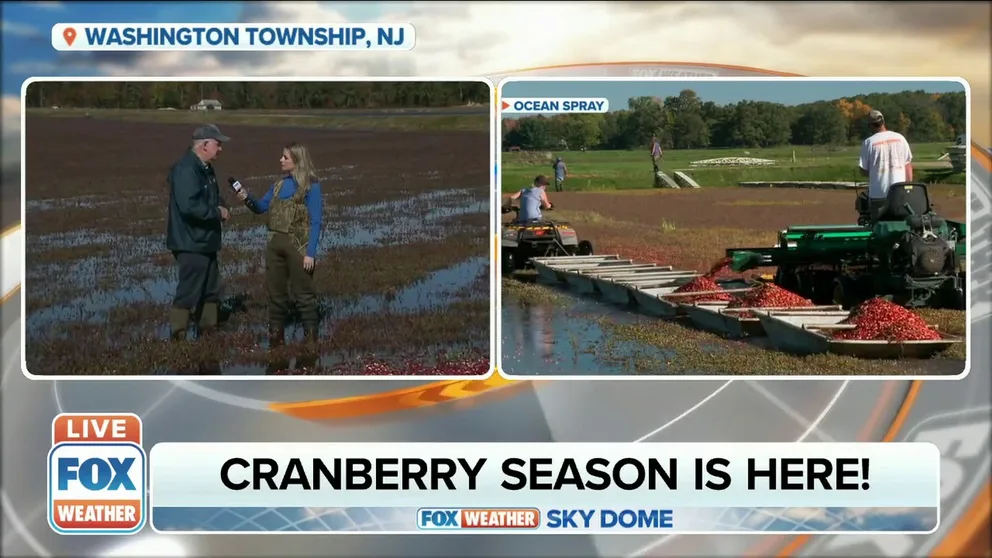How weather plays an important role for the nation's cranberry crops
Cranberries are harvested in five states: Massachusetts, New York, New Jersey, Wisconsin and Oregon
How the weather affects the nation's cranberry crops
FOX Weather Multimedia Journalist Katie Byrne was in New Jersey Monday and explains how the weather can affect the nation's cranberry crops.
CHATSWORTH, NJ - It's crunch time for cranberry season!
Cranberries are one of three fruits native to the U.S., and they're only harvested in five states – Massachusetts, New York, New Jersey, Wisconsin and Oregon.
FOX Weather Multimedia Journalist Katie Byrne was at Lee Brothers Farm in Chatsworth, New Jersey, Monday and was shown how they're harvested every year and how the weather could significantly impact the crop.
"Taking the long view, the climate is clearly warmer," Stephen Lee III, owner of Lee Brothers Farm, said. "We have less frost nights in the spring. Ten years ago, we would have 15 in the month of May. This year we had about five nights with frost."
Those frost nights are more important in the fall.
"We need cooler nights for the berries to color up," Lee said. "There are berries that are white. They just haven't been exposed to cold temperatures so far this year."
And Lee said that he has had to change how his family-owned business runs because of the changing climate.
"We've had to change our harvest schedule to wait for cooler weather," he said. "Today, November 1, is really the first cool night we've had all fall. And that's a problem because the cranberries don't turn the bright red unless we got those nice, cool temperatures."
Lee said that's part of the process. The shutdown of chlorophyll helps the berries get ready for winter.
"Even the leaves on the plants go from green to red, but that hasn't been happening this year," Lee said. "Just look at the trees in the woods. They aren't yet the bright yellow or red."
How a family-owned farm has been harvesting cranberries for generations
FOX Weather Multimedia Journalist Katie Byrne tours a cranberry bog in New Jersey where the owners have been harvesting the fruit for generations.
Water also plays a vital role in the harvesting of cranberries.
The bogs are flooded for a few days during a process called wet harvesting. But that water is repurposed later, so the water isn't wasted.
A harvester will drive through the bog and knock the cranberries off their vines so they float to the surface. Then they can be collected.
Even the leaves are collected and turned into compost for the fields.
That's important because these farmers need to nurture two crops at once in a delicate process.
While they're out in the bogs collecting this year's crop, the buds for next season have already started growing on the vines.

